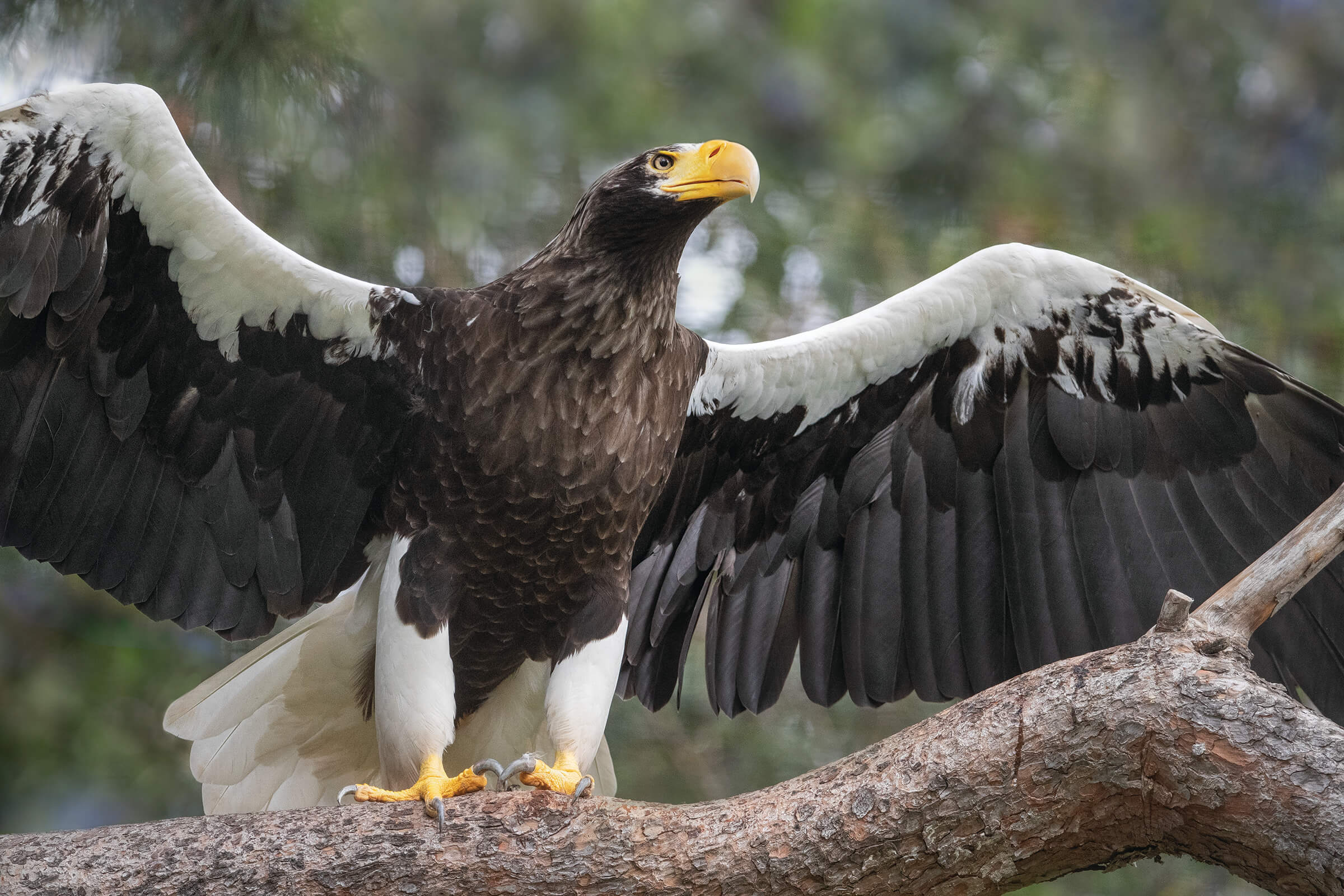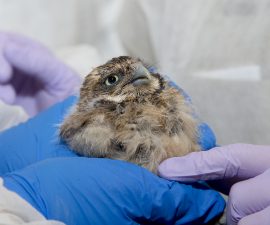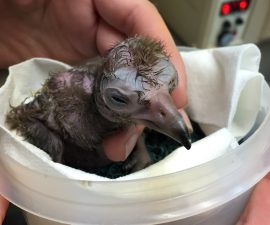BY Eston Ellis
Photography by Ken Bohn
When many people picture a bird of prey, they tend to think of an eagle with a huge wingspan, a steely-eyed gaze, a powerful dive to swoop down on unsuspecting prey, and sharp talons to grab it in the blink of an eye. Yet birds of prey come in many sizes, from the tiny African pygmy falcon, with a wingspan of 14 inches, to the gigantic California condor, with a wingspan of 9 to 10 feet. Birds of prey are as diverse as they are impressive, and they include eagles, hawks, and falcons, as well as ospreys, owls, and vultures.
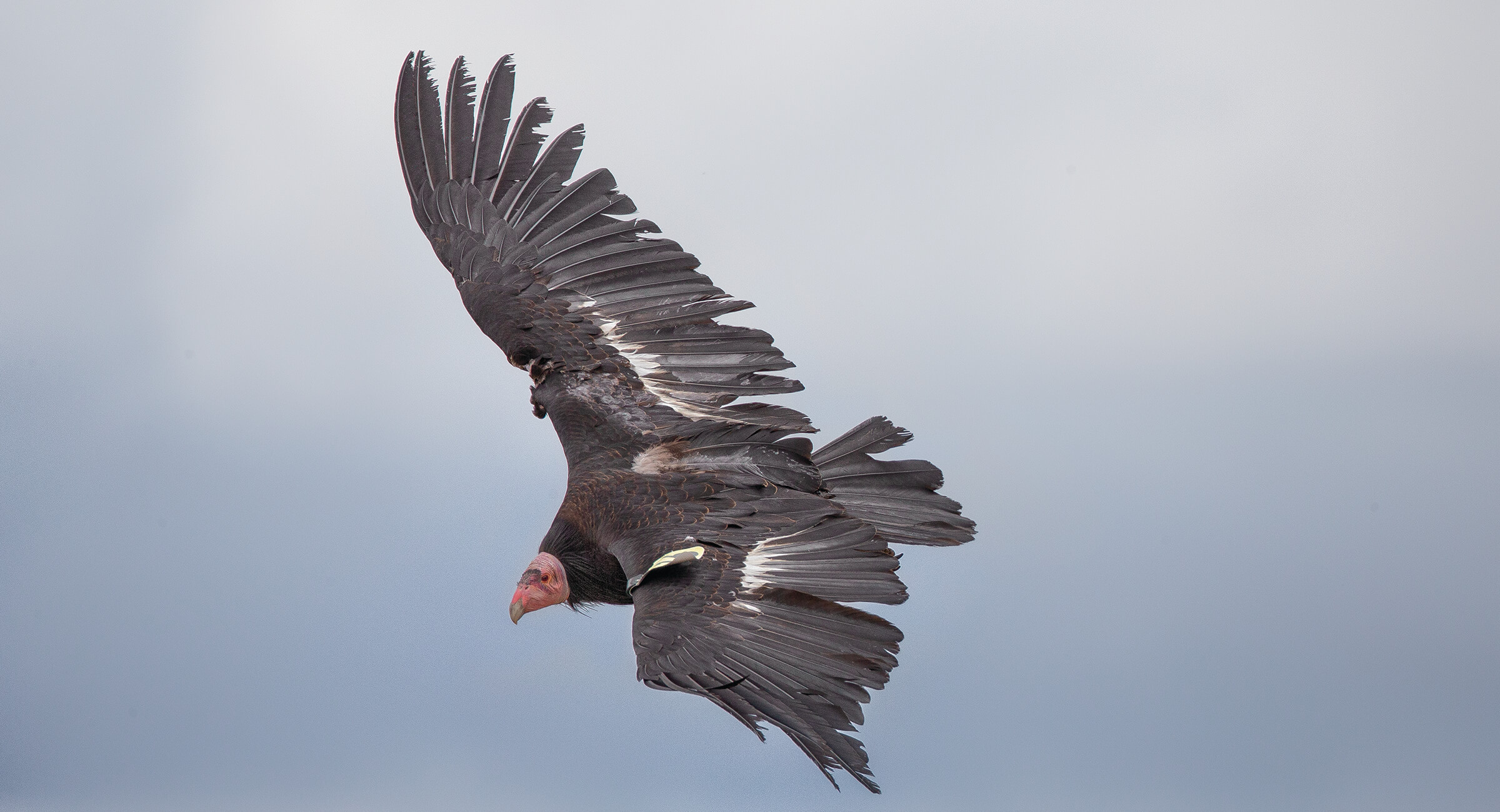
WHAT MAKES A BIRD OF PREY
There are other bird species that eat animals, but birds of prey—also called raptors—are different, because they catch or kill their prey with their feet, not just their beaks. They use their powerful feet and sharp talons to snag, hold, or subdue their prey, and they use their sharp, hooked beaks to tear their meal into bite-size pieces. They may also eat carrion, which doesn’t require hunting but does require sharp tools to consume.
A raptor’s talons vary in size and angle, depending on the bird and its target prey. For instance, ospreys eat fish, and each of their feet has four large, fishhook-shaped talons to deftly snag their slippery catch. An African pygmy falcon, which eats small prey like lizards and insects, has much smaller talons, but they are still quite sharp and effective for grabbing.
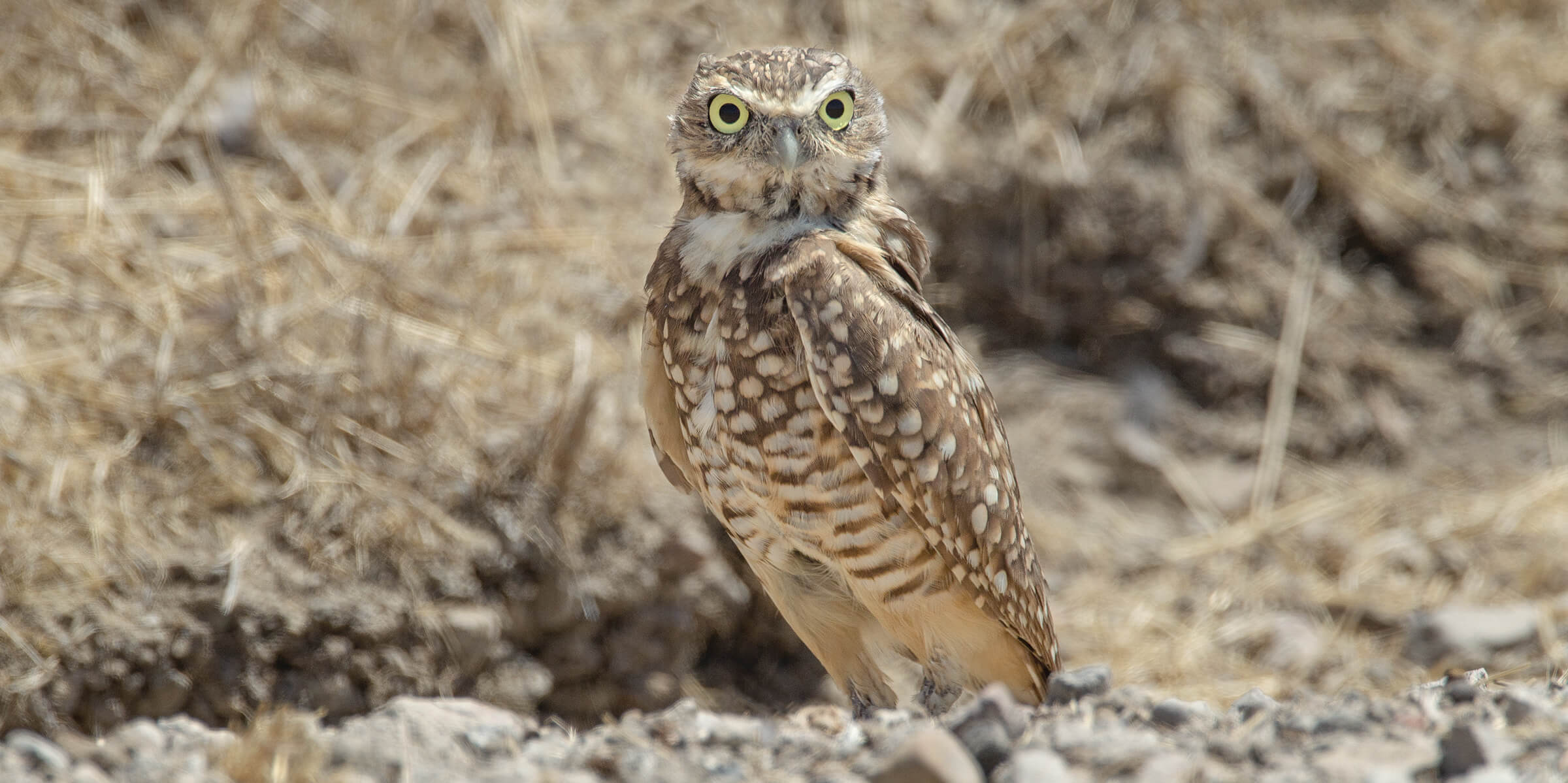
SEEING IS BELIEVING
Birds of prey have keen eyesight, to locate their next meal from a distance as they fly high above an area—some can spot moving prey up to a mile away. Species that are active during the day, including golden eagles and Harris’s hawks, can see color. They also have ultraviolet (UV) vision—a super skill that allows them to spot a urine trail leading to a prey species. Raptors that are nocturnal, like owls, in addition to a keen sense of hearing, have large eyes with many light-sensitive cells, allowing them to pursue prey in near darkness.
Most birds of prey have vision that is up to six times better than that of a human—and all have much larger eyes in proportion to their body size than humans. Their forward-facing eyes provide binocular vision for depth perception and determining distance and location. Many raptors can turn their head 180 degrees, and sometimes up to 270 degrees, to see what’s going on around them. They are unable to move their eyes in the sockets very much, but that head movement gives them a wide field of vision.
Because vision is so important, raptors’ eyes are well protected. They are surrounded on the sides by bone, and a bony, brow-like ridge acts like the protective brim of a baseball cap. They also have a secondary, semi-transparent eyelid, called a nictitating membrane, to keep their eyes clean and protected.
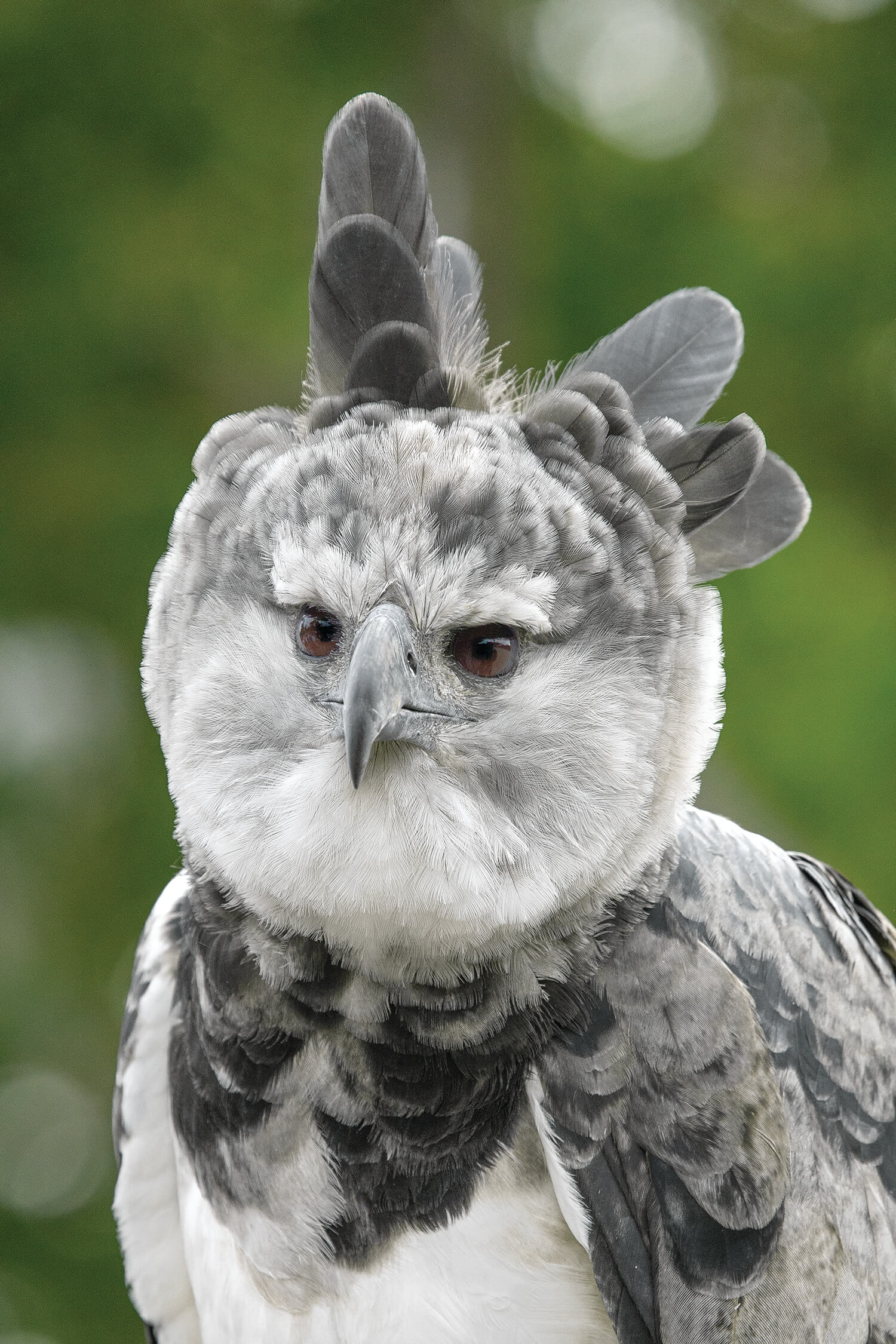
WELL-ADAPTED RAPTORS
From the California condor to the harpy eagle (pictured), birds of prey come in many shapes and sizes.
THEY HEAR YOU NOW
Excellent hearing is another tool that raptors use to locate prey. Researchers studying the hearing acuity of birds of prey found that barn owls, for instance, not only hear higher-frequency sounds than most birds, but their brain coordinates the signals from each ear to accurately “map” a sound. The bird can navigate directly to the sound of potential prey before it even sees it.
For some birds of prey, like owls and harpy eagles, a concave arrangement of surrounding feathers called a “facial disk” helps direct sound waves to their ears. And the ears are not in the same place on each side of the head—one is lower than the other, which further helps to pinpoint sounds.
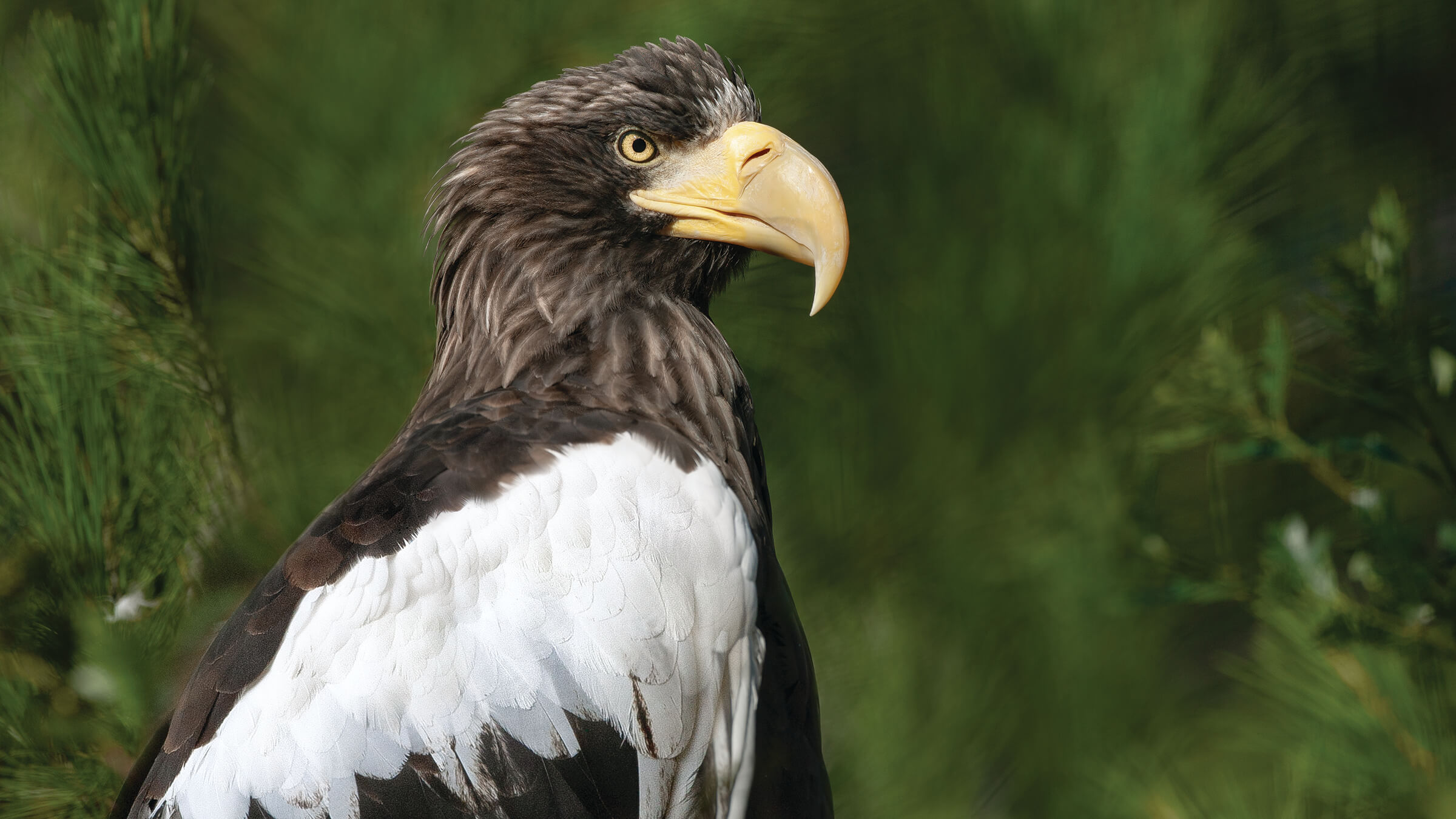
PROTECTING PREDATORS
As carnivores at the top of the food chain, birds of prey unfortunately face a variety of threats in their native habitats. Climate change, pollution, and habitat loss and fragmentation affect the abundance of prey and access to water and nesting sites. Disease, including West Nile virus and avian influenza, can devastate bird populations. Then there are conflicts with humans and human development: collisions with power lines, vehicles, and wind turbines; ranchers protecting livestock; and lead poisoning that occurs when raptors eat animal carcasses containing lead bullet fragments. Lead poisoning has had a dramatic effect on many species—it was a major factor in almost driving the California condor to extinction in the 1980s.
San Diego Zoo Global has participated in a variety of collaborative conservation projects to help birds of prey, including Andean condors, Steller’s sea-eagles, and harpy eagles. One of the best-known projects is the ongoing California Condor Recovery Program that began in the 1980s. Thanks to carefully designed breeding and rearing protocols, genetic analysis, nutrition, behavioral ecology, pathology research, and monitoring of released birds, there are now more than 480 condors, with more than 300 flying free in California, Arizona, Utah, and Mexico.
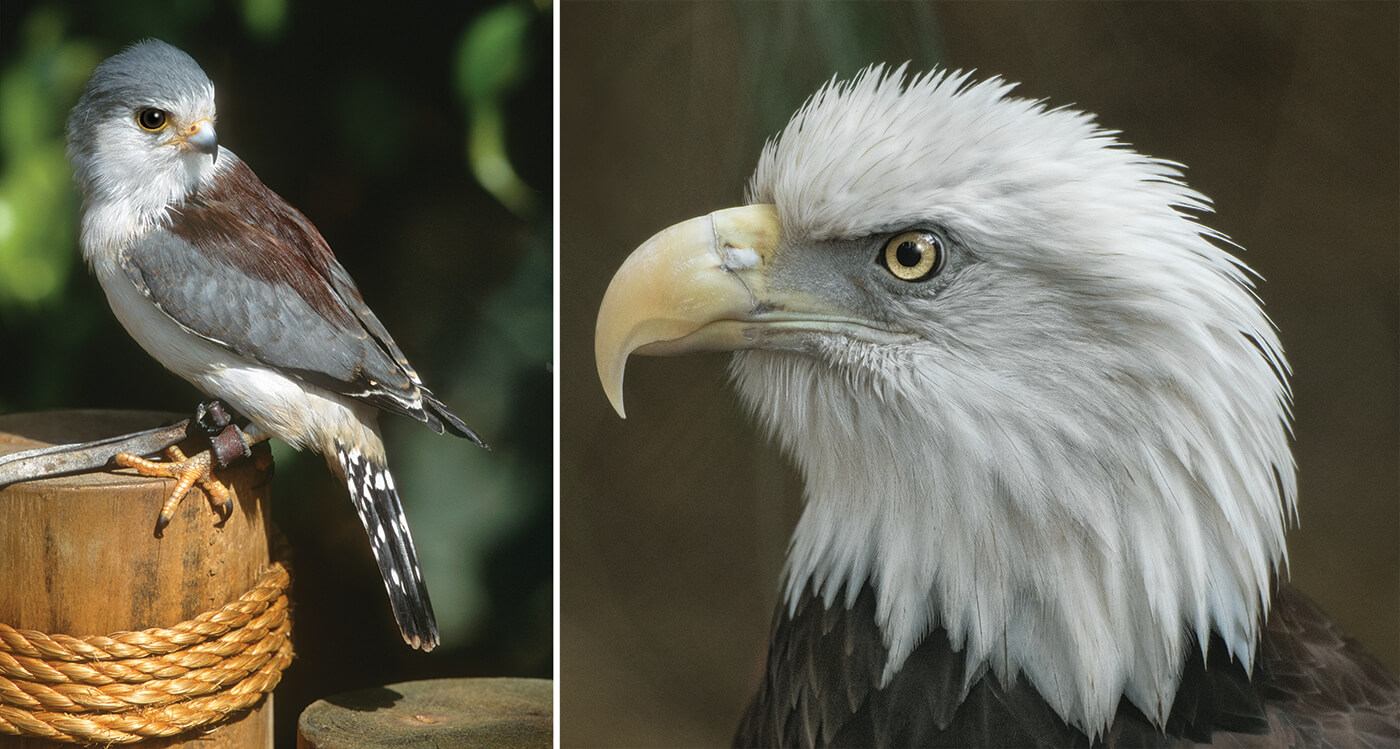
LOOK SHARP
Sharp beaks help birds of prey like the African pygmy falcon (left) and bald eagle (right) tear the meat they’ve hunted into bite-size pieces.
Another project is for western burrowing owls, which live in North and South America and make their homes in abandoned California ground squirrel burrows, prairie dog burrows, or rattlesnake dens. The state of California lists them as a species of special concern due to continued habitat loss, and San Diego Zoo Global has partnered with multiple agencies to develop a burrowing owl conservation strategy. Current work includes monitoring the existing population, searching for suitable habitats for new colonies throughout San Diego County, and reintroducing and supporting those colonies.
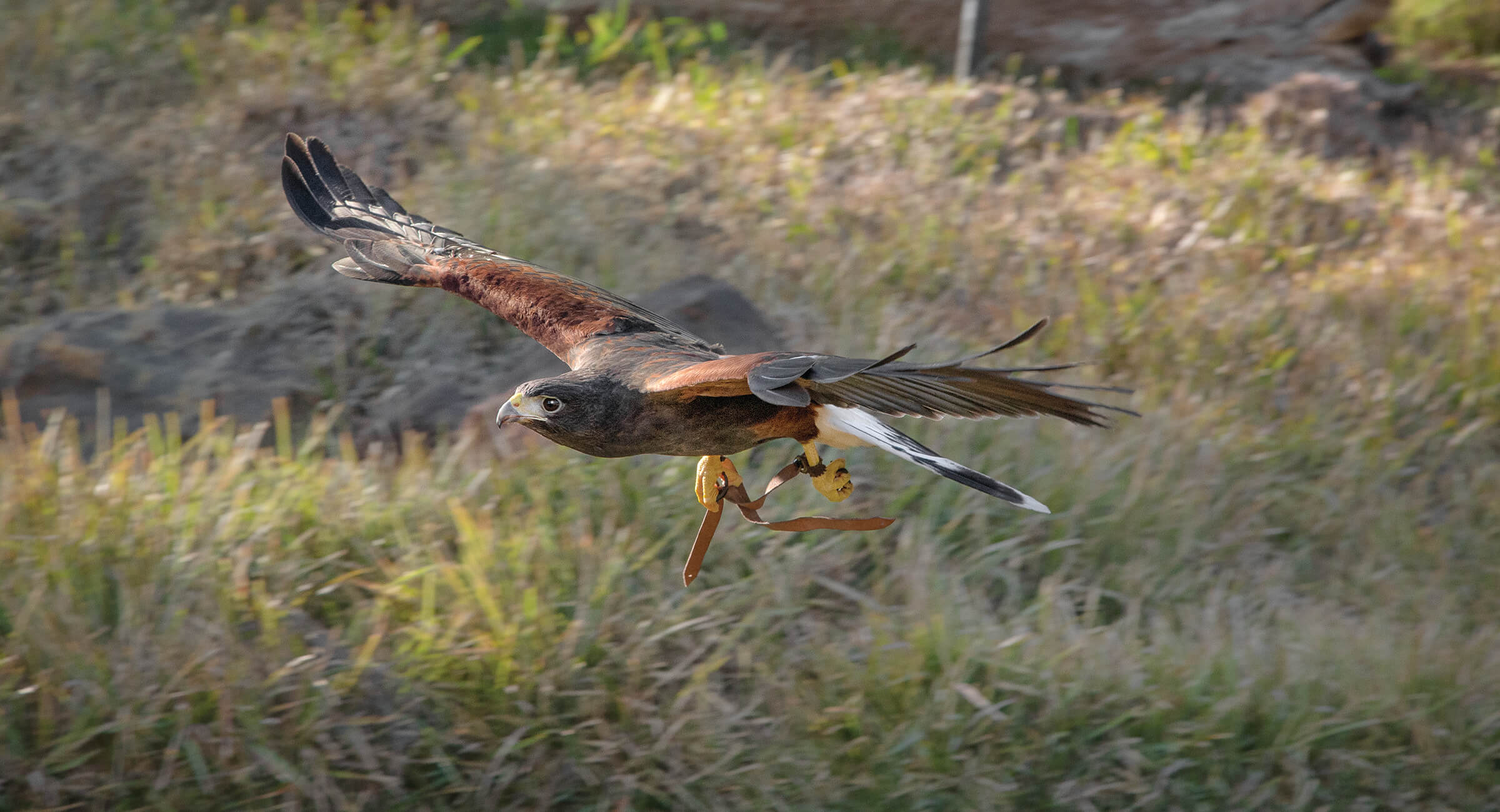
THE THRILL OF RAPTORS
While encountering raptors Jurassic Park style may not be desirable, meeting our raptors at the Zoo and Safari Park is a thrill. At the Zoo, Eagle Trail features a large aviary where the birds can take wing and fly, with trees and lush vegetation for perching to eye their visitors. The bridge and path to the aviary is newly remodeled, and featured birds of prey here include the harpy eagle, Steller’s sea-eagle, ornate hawk-eagle, and Andean condor.
A rocky outcropping at the back of the aviary provides a nesting platform. The keepers place options for nesting material in the exhibit, but the size, shape, and form of each nest is up to the birds to create. The nesting platform also has a hidden secret: a chamber that allows keepers to gain access to the nests when needed.
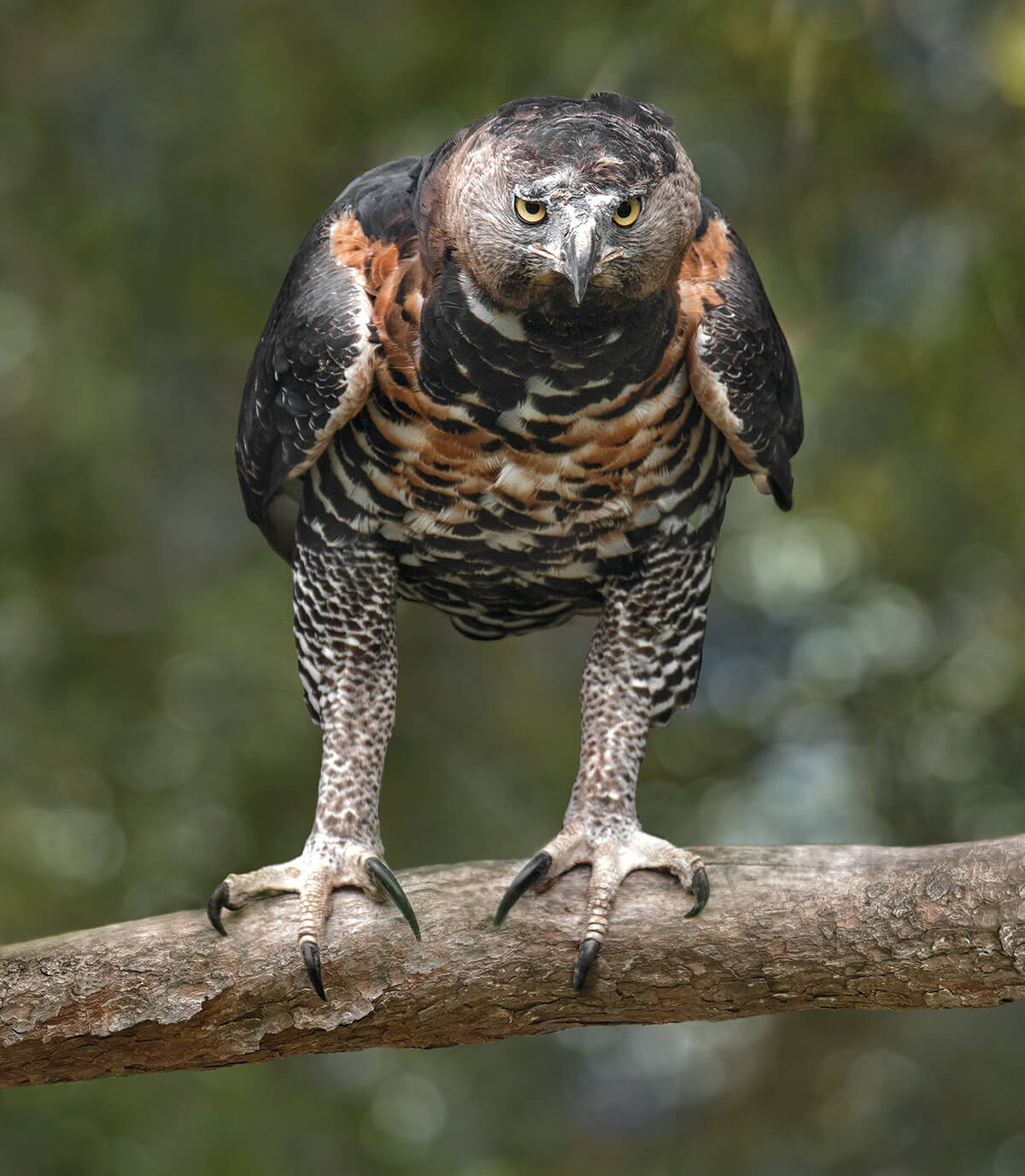
GET A GRIP
Raptors hunt with their feet, and the sharp talons of birds of prey like the crowned eagle (pictured here) help them snag prey and hold on tight.
Visitors can get up-close to see the famous California condors at both the Zoo, in the Harry and Grace Steele Elephant Odyssey, and at the Safari Park, at Condor Ridge. The Zoo condors are part of the larger story of long-ago California, when the condor’s ancestors were a common sight in the sky. In the Park’s Condor Ridge, visitors can explore an observation deck with an interpretive center that focuses on recovery efforts for North America’s largest flying bird, and get a remarkable view of the condors in a six-story-high cliffside aviary.
Safari Park guests can see even more raptors in the daily Frequent Flyers bird show at Benbough Amphitheater, where some of the birds soar right over the audience’s heads. While the presentations vary, guests may get to watch a secretary bird show off its hunting skills, find out how silently an owl can fly, or see a Harris’s hawk take off and land on the outstretched arm of a trainer.
Although they face many threats in their native habitats, ongoing conservation efforts are underway to help keep magnificent birds of prey soaring, swooping, and diving—or burrowing—for many years to come.

